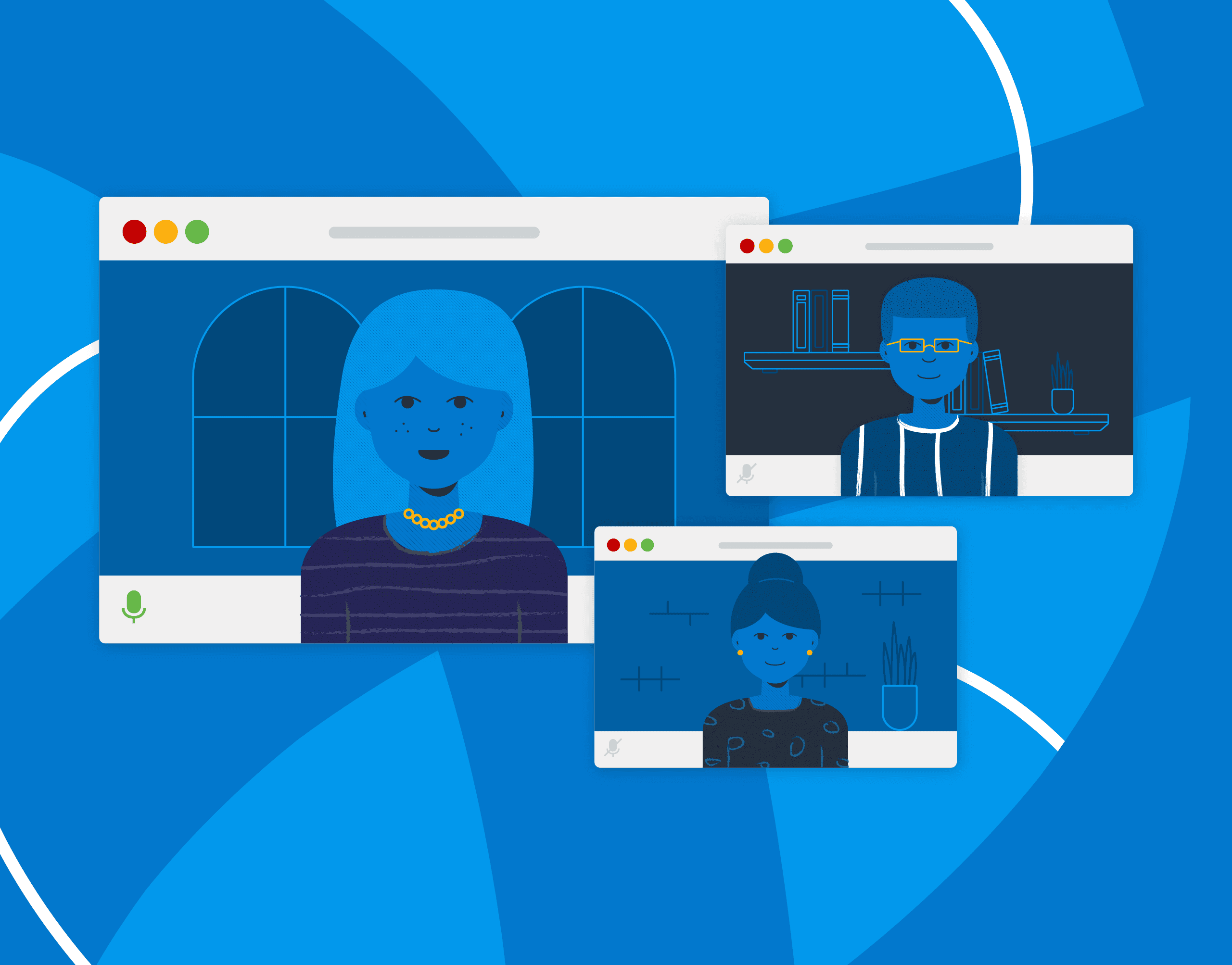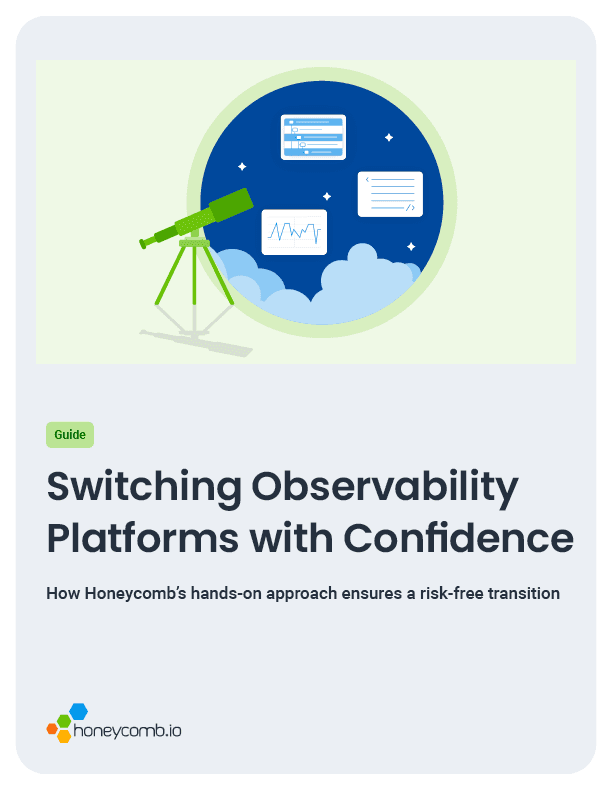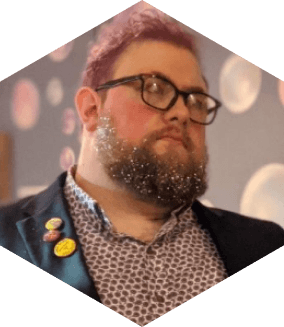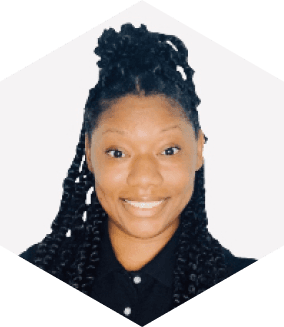A Day in the Life: Customer Success
We thought it’d be fun to give you some insights into what certain teams at Honeycomb do and how they spend their days, and who else would we start this experiment with than our fabulous customer success team? Without further ado, meet four of our bees!

By: Rox Williams


Switching Observability Platforms With Confidence
Learn MoreWe thought it’d be fun to give you some insights into what certain teams at Honeycomb do and how they spend their days, and who else would we start this experiment with other than our fabulous customer success team?
Meet four of our bees!
Product Training

David Marchante, Implementation Engineer
Morning
Beep beep beep beep
First things first, I smash that snooze button. Just as I settle in and doze off for that sweet extra 15 minutes, I think, “Oh shit! Do I have a workshop to deliver this morning?” The answer is always no, because I check the night before… but that doesn’t prevent this routine from happening. Now that I got that quick adrenaline shot, there is no need for that extra 15 minutes of sleep.
Fast-forwarding through my morning routine of getting dressed, eating breakfast, dog walking, and schlepping kids places (not necessarily in any consistent order), I settle at my desk with espresso in hand and put on a playlist that fits the morning’s mood.
Work
My day starts by reviewing my calendar and checking if I have any workshops or workshops prep I have for that day. I then go through emails, Slack messages that occurred after my day ended, or any workshop requests that may have come through Asana and/or Salesforce and address them accordingly.
The most visible part of my job is delivering workshops and I work very closely with the TCSMs to make sure that our customers are getting the enablement they need. This usually starts with a DM in Slack, follows with scheduling a scoping call with the customer, and ends with determining the customer’s needs. This is followed by a formal process of filling out a form that asks about the customer, the point of contact, technologies, what workshops they want, and what dates work for them. The TCSMs have access to the product trainings availability calendar so they are equipped to know what dates are available for workshops. I usually contact a TCSM via Slack to get more context, but also to connect directly so it doesn’t feel like a completely robotic process. If the customer has more complex needs, I usually reach out via video chat. I like my teammates and am always looking for excuses to connect.
If I don’t have any workshops to run first thing in the morning, this is my quiet time since most of my fellow bees are still sleeping or just getting ready for their day. This gives me time to get some proof of concepts going for upcoming customer engagements that need specific examples for their use cases. I also use this time to handle a lot of my administrative tasks, create strategic plans, or create lesson recordings if needed. This is great for me since I am a night owl and I feel less pressure to get things done first thing. It allows me to work on the things I enjoy most like implementations, strategic plans, and organizational tasks.
If I do have a workshop, I would have prepared beforehand. Our workshops are interactive and last about two hours, so there is a loose ‘script’ that I typically follow just to make sure I touch on the salient points, but each one is as different as our customers and their data. I always learn new things about our software with every customer engagement. The variety is exciting, but it can also be daunting at times especially when there are new problems to dig into. After an engagement has been delivered, I usually step away for a bit just to recharge because there is so much talking, interaction, and in-the-moment troubleshooting. Depending on the time, I may head to a nearby coffee shop or just go straight to lunch. In this scenario, I usually handle my administrative tasks first thing after lunch, but it is only what needs to be done since I am in internal meetings most afternoons.
Around mid-morning is when Slack starts to wake up. I take a break and engage in ‘water cooler chat’ with my coworkers. This keeps me connected and makes me feel less isolated in a remote company. While this is fun and not directly related to my role, it is important that I engage since I like to feel connected and keeps me productive by reminding me why my role is important to the company as a whole. This wind-down of connecting with my coworkers is a great segue into lunch.
Because I am three hours ahead of the majority of my fellow bees, most of my afternoons are chock full of meetings. This time is spent finding out what is going on strategically with the rest of the company, connecting with teammates via various virtual funtivities, and connecting with my team to ensure we are all on the same page and do some agenda planning. We are a remote company, and I find this a pleasant way to end my day.
If I have a workshop in the afternoon, that would usually be the end of my day so that I can recharge. Around the time an afternoon workshop ends, family starts arriving from work and school and I have to get ready to shuttle kids to various extracurricular activities so there isn’t time to pivot to another task. This is another reason my mornings are precious in getting work done.
There are times I have workshops in the late evening or at night due to the customer’s timezone. In those cases, I take care of my usual tasks in the morning, but I will not attend optional meetings and I keep the afternoon as light as possible. Our policy of ‘no meeting is mandatory’ makes this an easy decision and helps maintain my work/life balance. The policy also prevents me from being in front of my monitor the entire day.
End
I need quiet time to recharge, so I usually go to bed later than the rest of my household. I check my calendar for the next day’s engagements and let that determine how much I can get lost in a book and/or binge-watch some TV. I will inevitably freak out in the morning after I hit the snooze button regardless, but that’s how a typical day goes for me as an implementation engineer for product training.
Customer Success

Max Aguirre, Customer Architect
Customer architects are sort of a cross between customer success managers, sales/solutions architects, and support. A primary duty is to act as an escalation point for technical customer success managers, be that answering questions or assisting with a customer’s technical need (anything from a “how do I” to assisting with a medium term project). We also create content like blog posts and the Honeycomb Starter Packs. One CA each week is assigned to be interruptible and handle questions in Slack, hop on one-off calls, and manage the Kanban board—we call them the goalie. As far as my day…
Morning
Roll for first thing gym. If the roll succeeds, then 30 minutes of cardio, shower, and continue. Else, my day begins with three beverages (the optimal number in my opinion): a warm mug of tea, a large bottle of water, and a cup of some form of caffeine. Sit down at the desk, check chat and email, review my to-dos, and then BAM a meeting right off the bat—usually some kind of team meeting.
Work
If it’s my week as goalie, I scan across Slack to see if any coworkers or customers need assistance. Once that’s done, onto the Kanban board to review new requests, gather any missing info from the requester, and assign them to myself or another CA better suited to assist. If everything is quiet, onto the work below while keeping an eye on any new questions or requests. It’s common to end up having a couple days where I’m slammed with questions and last-minute calls as well as a few where I’m only poked once or twice.
If I’m not goalie, my days consist of various project work with customer and internal calls scattered here and there. Currently, I’m assisting some folks with setting up and using Refinery, helping the product and docs teams with Kubernetes documentation, and working on some written best practices content. Additionally, I often work with customers from the APAC region, so my day often ends with working calls.
Somewhere between 10 a.m. and 2 p.m., I’ll take the dog out for a short bit and make myself lunch.
End
Right after work it’s time for the gym to transition into non-work mode and then the evening routine. A few errands or chores, making dinner (I do most of the cooking in my household), and taking care of the dog’s evening routine. Finally, I’m usually found relaxing with a video game, watching a sporting event, or reading manga before a bedtime that’s usually later than it should be.

Victoria Roman, Technical Customer Success Manager
As a customer success manager, our primary role is to ensure that our customers achieve their desired outcomes and derive value from the products they have purchased. We are responsible for being our customers’ advocate and juggling the relationship we build with our champions with their technical needs. We work with multiple teams to make sure that our clients’ needs are documented, communicated, and resolved as needed. It takes quite a bit of organization and strategic thinking to make this happen across multiple accounts. Let’s talk about how we get this done on a daily basis, but remember: not all days are created equally!
Morning
My morning routine begins with prepping and seeing the kids off to school, some positive affirmations, and a nice large cup of coffee. Then, its time to focus on the workday.
Work
I’ll start with a thorough review of my calendar, ensuring I’m fully prepared for the day ahead. I carefully assess scheduled meetings and dedicate time to prepare for them by gathering pertinent information and formulating strategic approaches to maximize their effectiveness. Next, I dive into my Slack messages and emails to check for any customer inquires that may have arisen overnight. Amidst these tasks, I allocate a portion of my morning to account planning, in which I collaborate with account executives to strategize on relationship-building and a drive towards mutual success. This holistic approach sets the foundation for a productive and customer-centric day.
As the morning transitions into the afternoon, my focus usually shifts between a balance of internal team meetings and some customer meetings. These internal sessions serve as valuable opportunities to brainstorm innovative solutions and leverage collective expertise to address challenges effectively.
Amidst the hustle, I prioritize taking time to disconnect during my lunch break. This is integral to my productivity for the rest of the day. Often, I take the opportunity to take a brisk walk, allowing nature to invigorate my senses and clear my thoughts. Returning back for the day, I normally take the post-lunch hour to review and escalate any needs from our customers. If time permits, I will also try to add my notes from morning meetings and submit any tickets for technical assistance from our wonderful customer architect team.
As the day draws to a close, I focus on wrapping up loose ends and, ensuring that all customer inquiries have been addressed, and any pending tasks are either completed or prioritized for tomorrow.
End
Normally around this time, my kids start trickling in and I plan breaks on my calendar to pick them up from the bus. It’s simple breaks like this that make me appreciate that Honeycomb prioritizes calendar ownership. As I wind down, I shift my focus towards planning for meetings scheduled for the following day. I review agendas, gather necessary materials, and work with members of the account team to make sure we are aligned. With a clear roadmap in place, I sign off for the day, prepare dinner, and enjoy time with my family.
Customer Support

Dori Williams, Customer Support Engineer
An average day
As a support engineer at Honeycomb, I am responsible for being the cornerstone of resolving customer issues. Each day, my primary focus is to offer insightful, expert guidance to our users through our ticketing system. Utilizing Honeycomb’s capabilities, I actively troubleshoot issues reported by our customers. I don’t just aim to meet our SLAs daily, but I continuously strive to surpass them. It’s all about ensuring that every interaction further boosts Honeycomb’s esteemed reputation in the industry.
Beyond my usual tasks, we dive deep, working closely with customers and our TCSMs to understand their setups and identify issues. When necessary, we also involve our engineering team and customer architects for fine-tuning or guidance related to Honeycomb. In doing so, we’re not just fixing problems but empowering them to get the most out of Honeycomb. If there’s a chance to level up a customer’s experience with Honeycomb, we loop in our product training team to ensure they get that extra training and knowledge boost.
Interested in Honeycomb?
Get your free account today.
Want to know more?
Talk to our team to arrange a custom demo or for help finding the right plan.